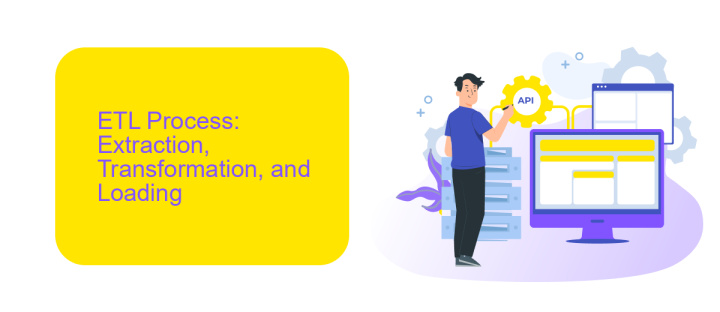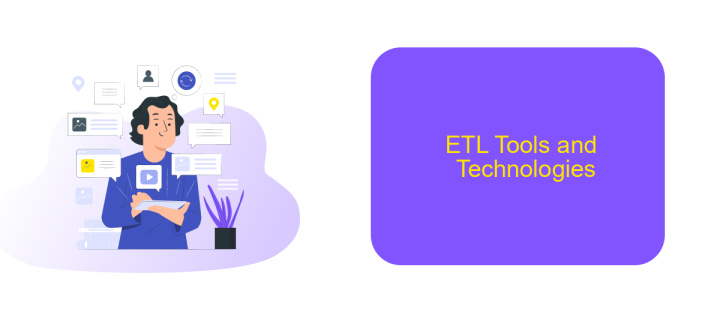What's ETL in Data
ETL, which stands for Extract, Transform, Load, is a crucial process in data management and integration. It involves extracting data from various sources, transforming it into a suitable format, and loading it into a target database or data warehouse. This process ensures that data is accurate, consistent, and ready for analysis, making it indispensable for businesses aiming to leverage data-driven insights.
Defining ETL
ETL stands for Extract, Transform, Load, and it is a crucial process in data management and integration. ETL enables organizations to consolidate data from various sources, transforming it into a consistent format before loading it into a target system, such as a data warehouse or database. This process ensures that data is accurate, reliable, and ready for analysis.
- Extract: Data is collected from multiple sources, such as databases, APIs, and flat files.
- Transform: Extracted data is cleaned, normalized, and transformed to fit the target system's requirements.
- Load: The transformed data is loaded into the target system for analysis and reporting.
Modern ETL tools, like ApiX-Drive, simplify the integration process by providing automated workflows and pre-built connectors for various data sources. ApiX-Drive allows users to set up integrations without coding, making it easier for businesses to manage their data efficiently. By leveraging such services, organizations can ensure seamless data flow and focus on deriving insights from their data.
ETL Process: Extraction, Transformation, and Loading

ETL, which stands for Extraction, Transformation, and Loading, is a crucial process in data management. During the extraction phase, data is collected from various sources such as databases, APIs, and flat files. This phase ensures that relevant data is gathered efficiently and accurately. Tools like ApiX-Drive can simplify this process by automating the extraction from different platforms, ensuring that data is captured in real-time without manual intervention.
In the transformation phase, the extracted data undergoes cleansing, formatting, and enrichment to meet the analytical requirements. This step is vital for maintaining data quality and consistency. Finally, during the loading phase, the transformed data is loaded into a data warehouse or another storage system where it can be accessed for analysis and reporting. Properly executed ETL processes enable organizations to derive meaningful insights from their data, supporting informed decision-making and strategic planning.
Benefits of ETL

ETL (Extract, Transform, Load) processes are essential for efficient data management and integration, providing numerous benefits for businesses. These processes enable organizations to consolidate data from various sources, ensuring consistency and accuracy, which is crucial for making informed decisions.
- Data Quality Improvement: ETL processes help in cleaning and standardizing data, removing inconsistencies and inaccuracies.
- Time Efficiency: Automating data extraction, transformation, and loading saves significant time and resources compared to manual data handling.
- Enhanced Data Integration: ETL tools facilitate seamless integration of data from multiple sources, allowing for comprehensive analysis.
- Scalability: ETL processes can handle large volumes of data, making them suitable for growing businesses.
- Cost Savings: By streamlining data management, ETL can reduce operational costs and improve overall efficiency.
Incorporating services like ApiX-Drive can further enhance the benefits of ETL by providing automated integration solutions. ApiX-Drive simplifies the setup of data pipelines, ensuring that data from various platforms is accurately and efficiently processed. This allows businesses to focus on analyzing data rather than managing it, leading to better strategic decisions and improved operational performance.
ETL Tools and Technologies

ETL (Extract, Transform, Load) tools and technologies are essential for managing and processing data efficiently. These tools help in extracting data from various sources, transforming it into a suitable format, and loading it into a target system for further analysis.
There are numerous ETL tools available in the market, each offering unique features and capabilities. Selecting the right tool depends on the specific needs and requirements of your organization. Some tools are designed for large-scale data processing, while others focus on ease of use and integration capabilities.
- Apache Nifi: An open-source data integration tool that supports powerful and scalable directed graphs of data routing, transformation, and system mediation logic.
- Talend: A popular ETL tool known for its extensive connectivity options and user-friendly interface.
- ApiX-Drive: A service that simplifies the integration process by allowing users to connect various applications and automate data workflows without coding.
- Informatica PowerCenter: A robust ETL tool that provides high-performance data integration solutions for enterprise-level data processing.
Using the right ETL tool can significantly improve data management efficiency and accuracy. Tools like ApiX-Drive are particularly useful for businesses looking to streamline their integration processes and automate data workflows with minimal technical expertise.


ETL Best Practices
Implementing ETL processes effectively requires adhering to several best practices. First, ensure data quality by incorporating validation steps at each stage of the ETL pipeline. This includes checking for missing values, duplicates, and inconsistencies. Automating these checks can save time and reduce human error. Additionally, consider using a robust ETL tool that supports a wide range of data sources and formats, such as ApiX-Drive, which simplifies the integration process and offers real-time data synchronization.
Another critical practice is to maintain comprehensive documentation of your ETL processes. This should include data flow diagrams, transformation logic, and error-handling procedures. Proper documentation aids in troubleshooting and makes it easier for new team members to understand the system. Regularly monitor and audit your ETL processes to ensure they are running efficiently and meeting performance benchmarks. Implementing these best practices will help you build a reliable and scalable ETL system.
FAQ
What is ETL in data processing?
Why is ETL important?
What are the main components of an ETL process?
How can ETL processes be automated?
What are some tools for automating ETL processes?
Do you want to achieve your goals in business, career and life faster and better? Do it with ApiX-Drive – a tool that will remove a significant part of the routine from workflows and free up additional time to achieve your goals. Test the capabilities of Apix-Drive for free – see for yourself the effectiveness of the tool.

